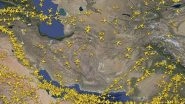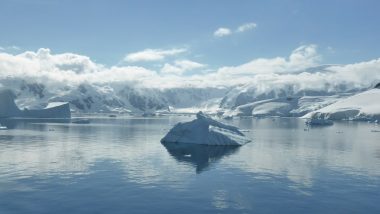Earth is probably the only planet that we know of in the majestic universe that plays host to spectacular oceans. The known is finite, while the unknown is infinite. As long as National Geographic started mapping out this planet we've had four oceans - Atlantic, Pacific, Indian, and the Arctic - covering earth surface. On June 8, National geographic officially recognized the existence of the fifth ocean named Southern Ocean after it garnered a proper stamp of approval by the U.S. Board on Geographic Names. Thus the southern ocean - the body of water extending from the coast of Antarctica - became part of our ocean heritage.
“Anyone who has been there will struggle to explain what's so mesmerizing about it, but they'll all agree that the glaciers are bluer, the air colder, the mountains more intimidating, and the landscapes more captivating than anywhere else you can go,” National Geographic quoted Seth Sykora-Bodie, a marine scientist at the National Oceanic and Atmospheric Administration (NOAA) and a National Geographic Explorer. With the addition of the newest ocean, we now have five oceans that cover 71 per cent of Earth’s surface. Here's the list of other oceans on this planet.
Pacific Ocean
The largest and deepest ocean on Earth, the Pacific Ocean was named by the explorer Ferdinand Magellan in 1520. It covers 60 million square miles from California to China and is reportedly tens of thousands below the surface of the water.
Atlantic Ocean
The second-largest ocean on this planet, the Atlantic Ocean, spend four million square miles bordered by America to the west and Europe and Africa to the east. It was used for trade and travel.
Indian Ocean
The third-largest Ocean it's reportedly seven times the size of the US and includes the Andaman Sea, Arabian Sea, Bay of Bengal, Flores Sea, Great Australian Bight, Gulf of Aden, Gulf of Oman, Java Sea, Mozambique Channel, Persian Gulf, Red Sea, Savu Sea, Strait of Malacca, Timor Sea, and other tributary water bodies. Since the country, India makes much of its northern border ist named as the Indian Ocean.
Arctic Ocean
Widely viewed as the world's smallest ocean it covers 6.1 million square miles and most parts is covered by Ice throughout the year. Although climate change has had a significant negative impact on the melting of these Icecaps and caused tremendous damage to the earth's surface. About four million people live in the Arctic region.
With the addition of the Southern Ocean on World Ocean Day, we now have five oceans on this planet. The ocean that is estimated to be formed when South America split from Antarctica about thirty million years ago, spans 20.33 million km.
(The above story first appeared on LatestLY on Jun 24, 2021 05:59 PM IST. For more news and updates on politics, world, sports, entertainment and lifestyle, log on to our website latestly.com).













 Quickly
Quickly


